
Each Chordette app is delivered with a Chordette Read Me file, covering installation and app usage. The Chordette Read Me file is available here:
Chordette for Education is a ukulele chord library program created specifically for schools and individual instructors. It can be used for creating song sheets, presentations, or adding chords to videos. This education version has a basic chord set for beginners, featuring finger numbering, alternate chords, and 3D chords. It also is available in color for Macintosh to support Aquila Kids strings. When used with a word processing program, chord charts can be built by using the keystroke information for entering the chords, or using the Copy button to paste chords into the document.
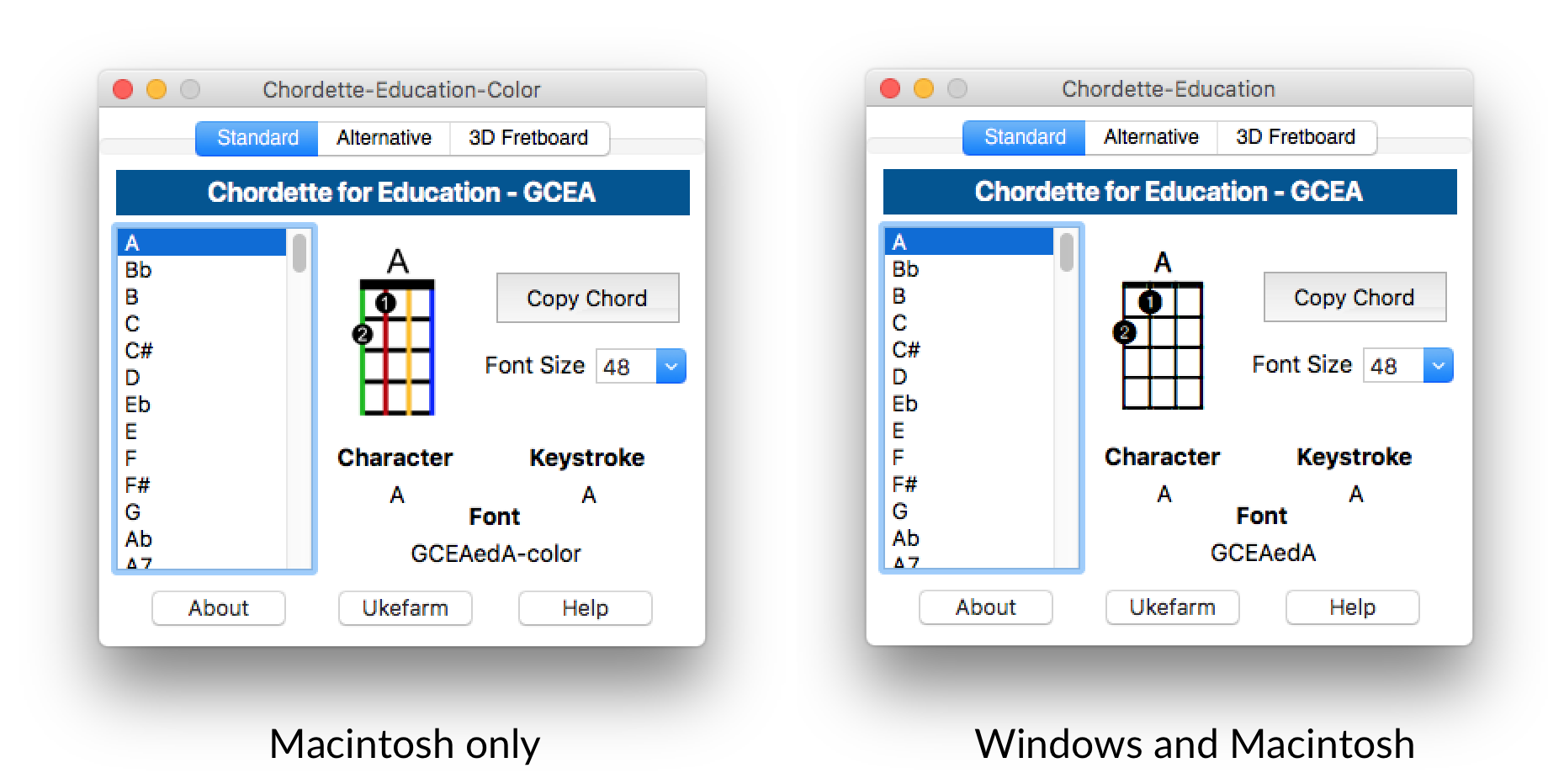
INSTALLATION for WINDOWS
Chordette for Education for Windows is distributed as a zip file named Chordette- Uke-Education-Win. After you download the zip file, right-click on the file and select Extract All...
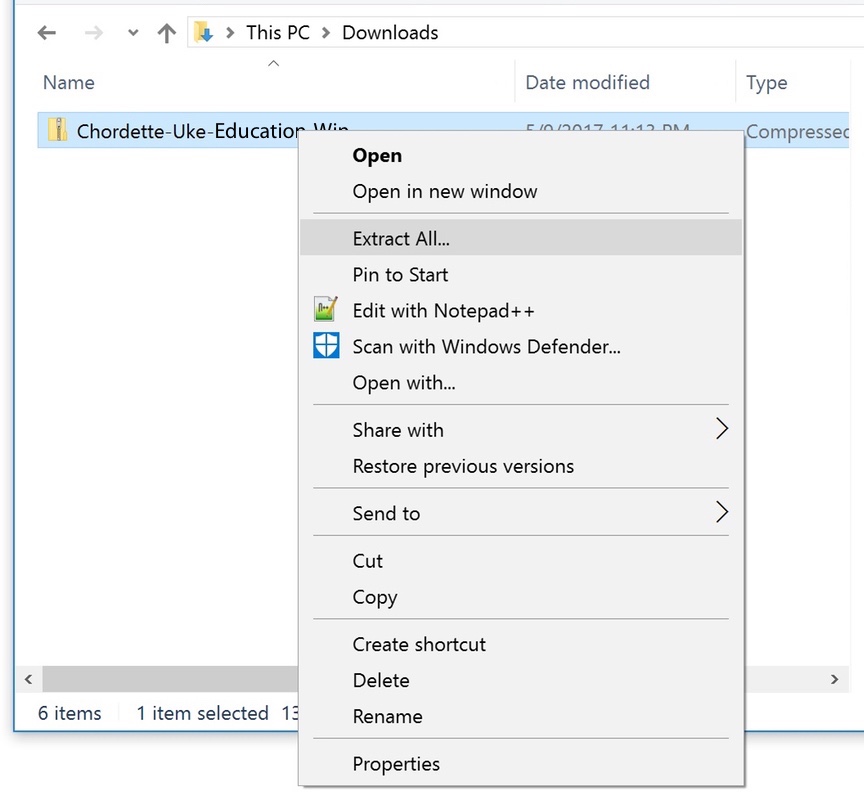
You will be asked to select a destination for the files.
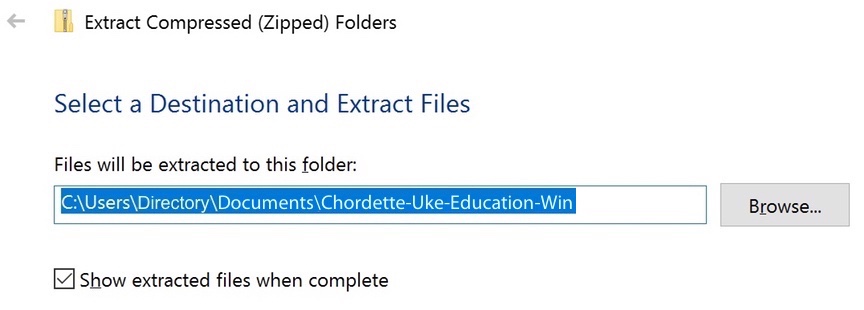
The zip file will be extracted to the destination you chose. There will be a folder named Chordette-Ed-Win. Open the folder to view the contents.

The next step is to install the custom fonts. Chordette requires three custom chord fonts, which are included with the application. It is important to install the fonts before opening the Chordette for Education app, or else you will just see alphanumeric characters displayed rather than the chords. Open the Chordette- Uke-Ed-Fonts folder. In Windows 10, access the font control panel. Click in Windows 10's Search field (located just to the right of the Start button), type "fonts," then click the item that appears at the top of the results: Fonts - Control panel. Drag each custom chord font to the main window. When you drop the font, you'll see a brief "installing font" message. If you are using an older Windows version and need help, google font installation for your operating system version.
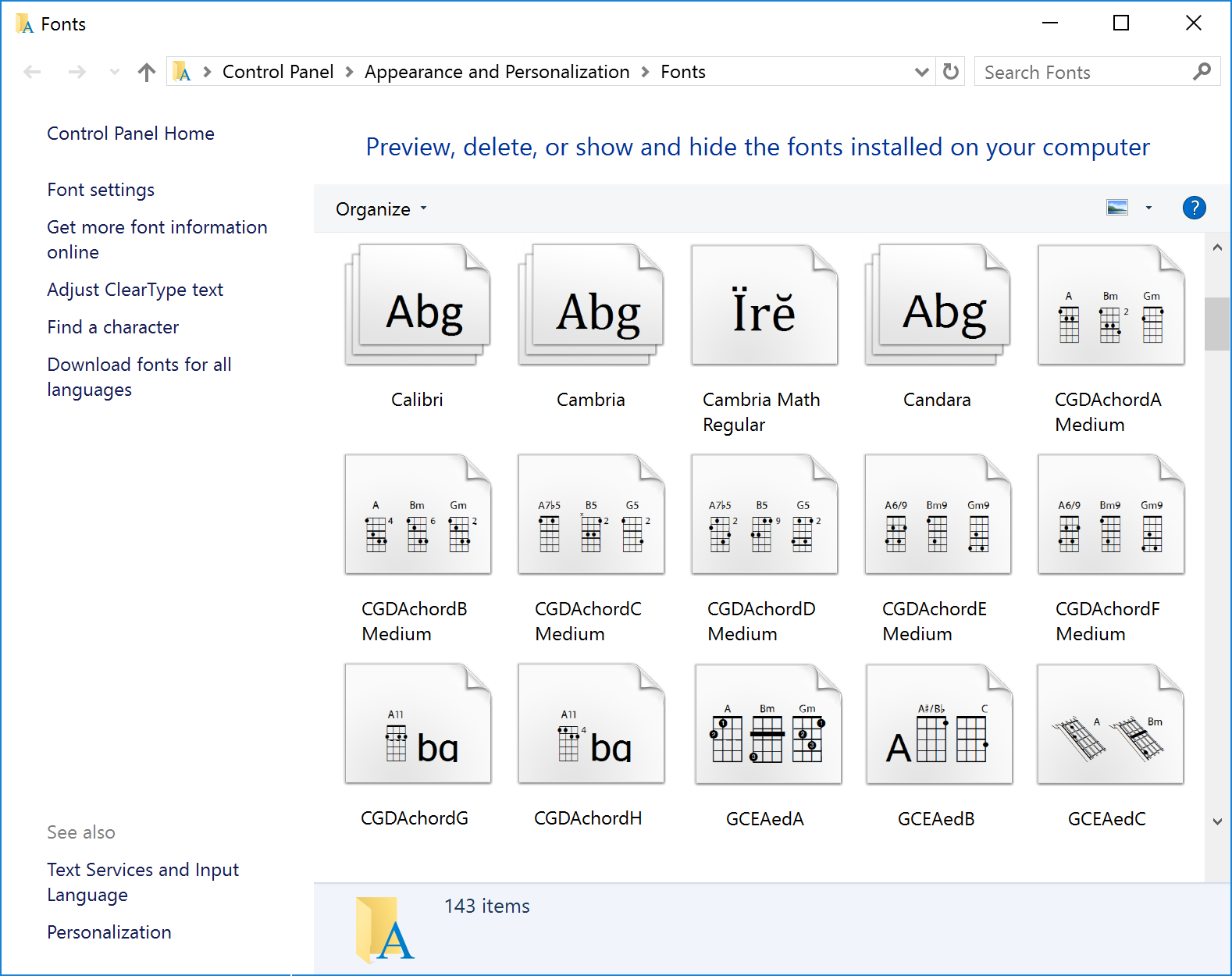
The Chordette-Ed-Win folder contains the Chordette-Uke-Education app and two additional folders. This folder can be located where you choose. It does not need to be in your Applications folder, but you must keep the Chordette-Uke-Education app inside the Chordette-Ed-Win folder with the other two folders.

The first time you run the app you will get a run file dialog. Chordette for Education has been code signed to ensure that the app has not been tampered with. Any modifications to the app will invalidate the code signature and alert you that the publisher is unknown. It is recommended that you retain the zip file as a backup.
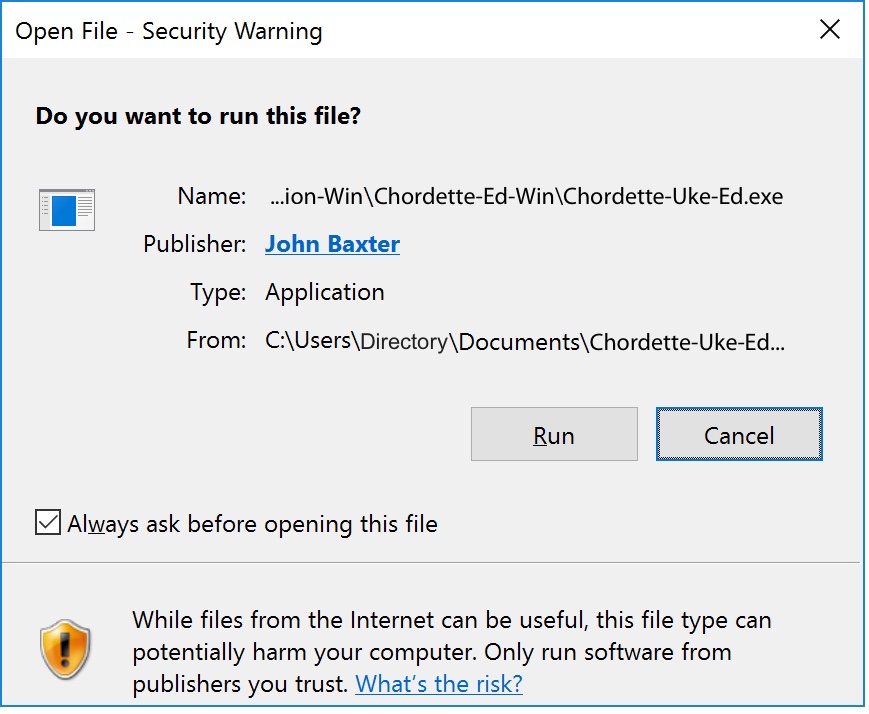
INSTALLATION for macOS
Chordette for Education for macOS is distributed as a dmg file named Chordette-Uke-Education-Mac (Chordette-Uke-Ed-Color-Mac for the color version). The dmg file contains the following components:Double click the dmg file. Chordette for Education for requires three custom chord fonts, which are included with the application. It is important to install the fonts before opening the Chordette for Education app, or else you will just see alphanumeric characters displayed rather than the chords. On your main drive, open the Library folder, and then open the fonts folder. Copy and Paste the fonts into the Fonts folder. It is recommended that you retain the dmg file as a backup.
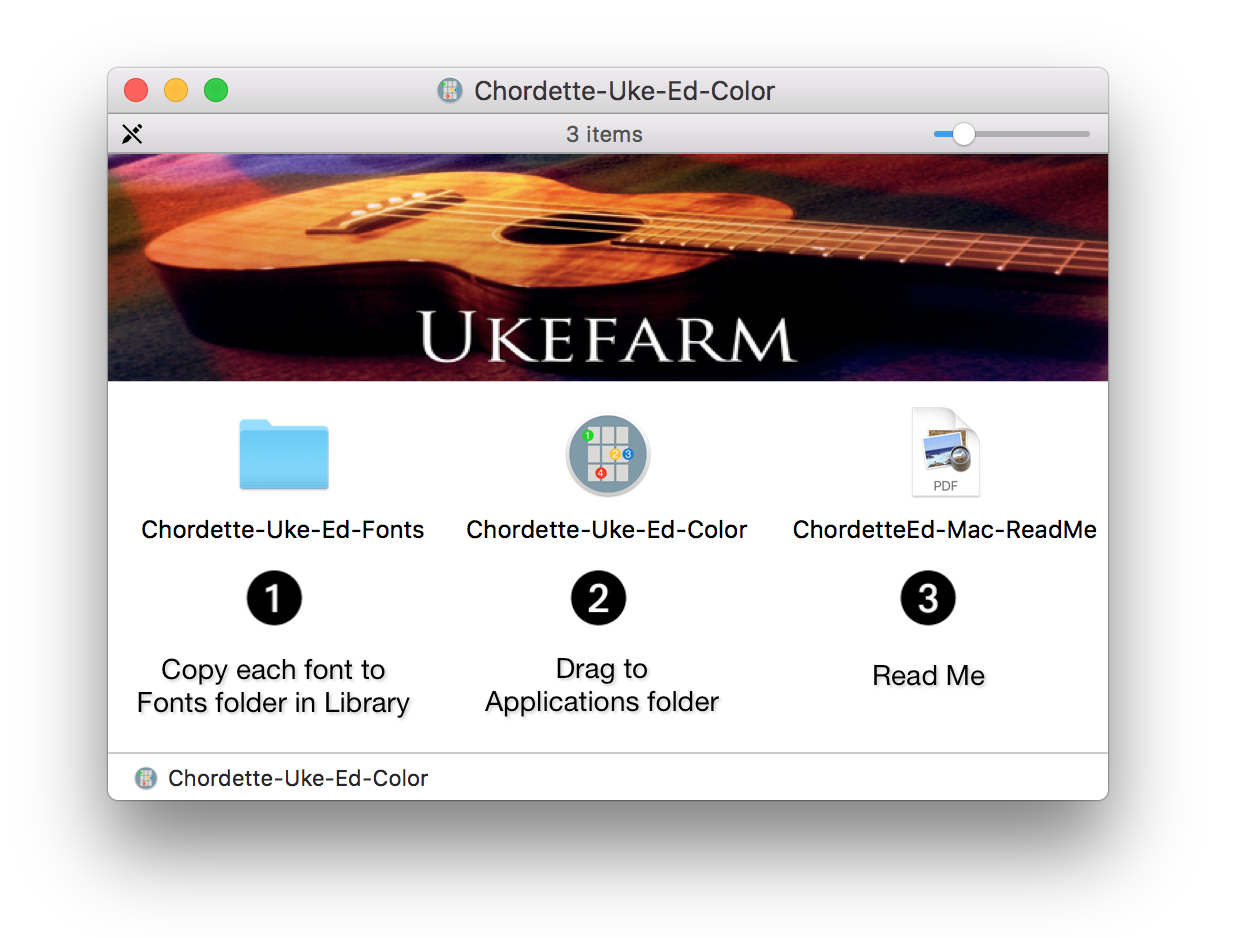
The Chordette app can be located anywhere you choose. It does not need to be in the Applications folder.
CHORD GROUPS

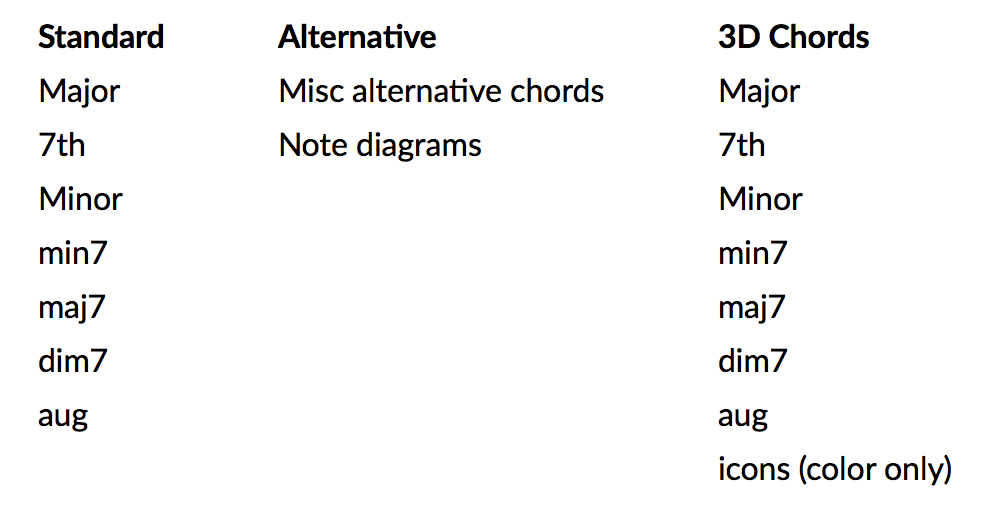
USING CHORDETTE
The easy way to enter chords is to use the Copy Chord button.
COPY CHORD BUTTON
When entering chords using the Copy Chord button, place your cursor where you want the chord to be inserted.
FONT SIZE
Select the font size from either the drop down menu below the Copy Chord button, or enter a specific size. After clicking on the Copy Chord button, either select paste from your app menu, or use your computer keyboard shortcut.
Macintosh - Command + v
Windows - Ctrl + v
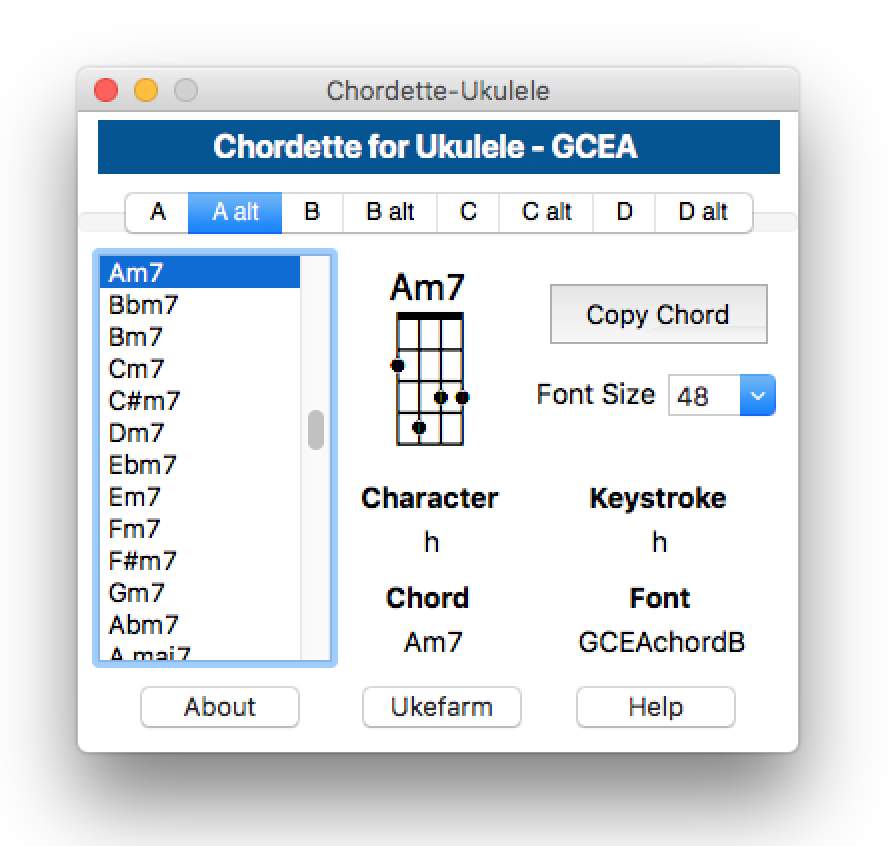
KEYBOARD CHORD ENTRY
Open a word processing app.
Select the font in the word processing app that relates to the desired chord (i.e., if the chord is under Chord Group B, select the font displayed under the Font label, for ukulele, GCEAchordC will be displayed).
Note: Some versions of word processors display the chord name in the style of the font. This will result in the font names being shown as a string of chords. You may not be able to disable this feature. If so, look for a menu item that provides an alternative view for fonts.Select the desired font size in the word processing app.
Type the keystroke that is displayed in Chordette for Ukulele for the desired chord. For example, "A" will enter an A chord for Group A chords. Typing "Q" will enter a Cmaj7 chord. For chords that use the alt key, do the following:
Press the alt key (also labeled as "Option" on Macintosh) and type the number or letter for the chord. For example using GCEAchordA:
Macintosh - Pressing the option key and typing "3" will display the Bb5 chord.
Windows - Pressing the alt key and typing "0163" will display the Bb5 chord.